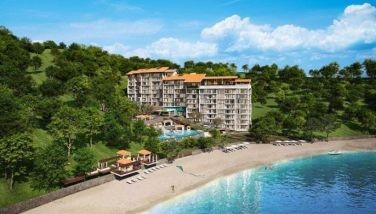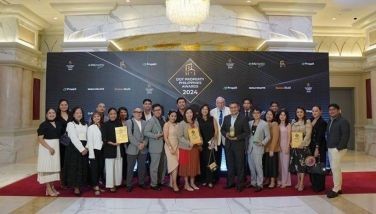Cost-effective, energy-friendly buildings now the rule rather than exception
MANILA, Philippines - Because office buildings have been identified as among the biggest users of earth’s resources and among the significant contributors to climate change, the quest for savings in energy and water usage has become a constantly evolving process for global property managers.
Leading-edge property managers today are continuously challenging current practices so that the usage of energy, water and other resources are kept to a minimum, according to Henry Torremonia, JLL head of property management in the Philippines.
He observes, for instance, that new top-end buildings in the major business districts are now veering away from floor-to-ceiling glass curtain walls, the big thing in the 1990s when many of Makati’s iconic corporate towers were built. Punch windows imbedded on concrete walls are again making a comeback in corporate developments primarily as an attempt to keep out heat in buildings and to lower air-conditioning costs and energy usage.
Torremonia shares that in most office buildings, air-conditioning, as a rule, usually accounts for 34 percent energy usage; lighting, 30 percent; office equipment, 16 percent; water supply, nine percent. Thus, efforts to maximize air-conditioning now also include adjusting temperature levels when the climate suddenly changes or when there are less occupants in a given area; installing two types of shades in offices -- black-out shades to keep out direct sunlight and a medium shade just to allow light to filter through while providing privacy.
The reality of high energy and operating costs are now reflected even in the design of buildings with JLL property managers giving inputs at the blueprint stage to building owners on how to lessen the load on the air-conditioning system, how to layout equipment for easy access and maintenance, and so on. “We are keenly aware of operating, maintenance and replacement costs of office equipment and measure our performance against the savings we can generate for the building owner,” says Torremonia.
There are not only economic incentives for cost efficient buildings but also social ones, he adds. He is particularly proud that a number of buildings managed by JLL has won citations from the Department of Energy which hands out the Don Emilio Abello Energy Efficiency Awards. These buildings include among many others Citibank Square, Citi Tower, GT Tower. In addition, Executive Corporate Center property manager Carlos Cariaso from JLL won the Energy Manager Award.
In addition to being cost efficient managers, JLL property managers are also trained to anticipate trends so that building owners are assisted in helping meet the needs of occupants. Torremonia observes, for instance, that among corporate employees “exercise has become very important and is fervently sought after.” Thus, he may recommend to a building owner to install bike racks and showers so that employees who bike or run to work can easily change clothes and look forward to going to work.
He also notices that there is a growing desire among companies to hire persons with disabilities and who require ramps and other devices. In fact, some JLL corporate occupiers now also look into how friendly a building is to persons with disabilities. He shares that Panorama Building managed by JLL was recently given a silver award for being a PWD friendly establishment by the Philippine Foundation for the Rehabilitation of Disabled. Such awards add to the credentials of a building.
Being part of JLL’s global network of property managers that actively share information also helps Torremonia and his team improve their performance. They have adopted, for instance, the energy audit processes of Singapore and Australia. “We have access to building benchmarks beyond national borders,” he concludes.
- Latest

























